Intel Skylake Z170 Motherboards: A Quick Look at 55+ New Products
by Ian Cutress on August 5, 2015 7:59 AM ESTMSI Z170: Other Gaming Boards and Channel
MSI Z170A XPower Gaming Titanium Edition
Everyone remembers when MSI’s overclocking range of motherboards were yellow, right? Well how about if they turned a silvery gleam? Welcome to Skylake, because MSI has you covered.
The XPower Gaming Titanium Edition (XPGT for short) is one of those products trying to break new areas of aesthetics. Some will like it, some will not – as far as we can tell, the design itself has little effect on actual levels of performance, but this is an XPower part of the line-up, meaning it is MSI’s more overclocking (and extreme overclocking) focused model. As a result, and to go with the name, the power delivery uses many Titanium chokes, we get a potential 4-way CrossFire using CPU and PCH lanes, and the OC panel has changed a fair bit.
The OC Dashboard is designed to attach to the motherboard in the top right and give the OC buttons needed, such as power/reset, base frequency/multiplier adjustments, a full system reset, fast boot and a slow mode switch. For users that don’t need it, it should be able to be left off.
Along with the matching steel armor on the PCIe slots we get two M.2 slots which according to my schematics can both be used in PCIe 3.0 x4 mode at the same time, although each one will lose you two SATA ports. It seems slightly odd that these are all made dependent when Z170 has enough chipset lanes to go around, but this is what MSI has done.
USB 3.1 on the rear panel comes in the form of two Type-A ports from the ASMedia ASM1142 controller, while networking duties are form the Intel I219-V and audio is an enhanced Realtek ALC1150 solution.
Pricing for the XPGT is set for £240, or $310 in the US.
MSI Z170A Krait Gaming
The Krait line from MSI initially started as just a simple white on black theme, but then somehow developed a following, a snake head logo and now gets merged into MSI’s Gaming line like everything else. Typically the Krait name is reserved for a cheaper ATX motherboard that supports SLI, and here we have that without USB 3.1 and only two video outputs. There is an M.2 slot that runs in PCIe 3.0 x4 mode, as well as an Intel I219-V network controller and a Realtek ALC1150 audio codec.
Pricing for the Z170 Krait Gaming should come in at £125/$162.
MSI Z170A-G45 Gaming – image from TechPowerUp
The Z170A-G45 Gaming is actually a minor variant on the Gaming M5 with a slightly different arrangement for the voltage read points and a single USB 3.1-C rather than two USB 3.1-A ports. The G45 version also seems to have a VGA on the rear panel, but apart from that it looks pretty much the same from a design standpoint.
The M5 was set around $195, so I’d imagine this to be similar.
MSI Z170A-G43
We saw the Z170A-G43 at Computex, which (like the G45 seems) to be a slight variant from the Gaming M line. This time the G43 seems to align with the M3 with a slightly different SATA arrangement, a different aesthetic, and I’d imagine given the design it should be using either the Intel I219-V or the Realtek network ports. Similar to the previous board, the G45 also seems to be equipped with a VGA port but similar to the M3, this board does not seem to support SLI giving a single PCIe 3.0 x16 from the CPU and then a PCIe 3.0 x4 from the chipset.
MSI Z170A PC Mate
MSI’s PC Mate line is a little bit of an oddball here, not being given the Gaming name. That is because it sits more in that internet café style of system or bulk office ATX design. This means separate PS/2 connectors on the rear panel, the three most common VGA outputs, a single M.2 x4 slot, two USB 3.1-A ports on the rear (the ones on the right), a basic audio codec (looks like ALC892) and a Realtek network controller. The PC Mate motherboard, despite being in the Z170 level of motherboards, is more designed to make a non-overclocking CPU happy with a set of basic functionality to satisfy users who don’t actually own the PC they are working on.


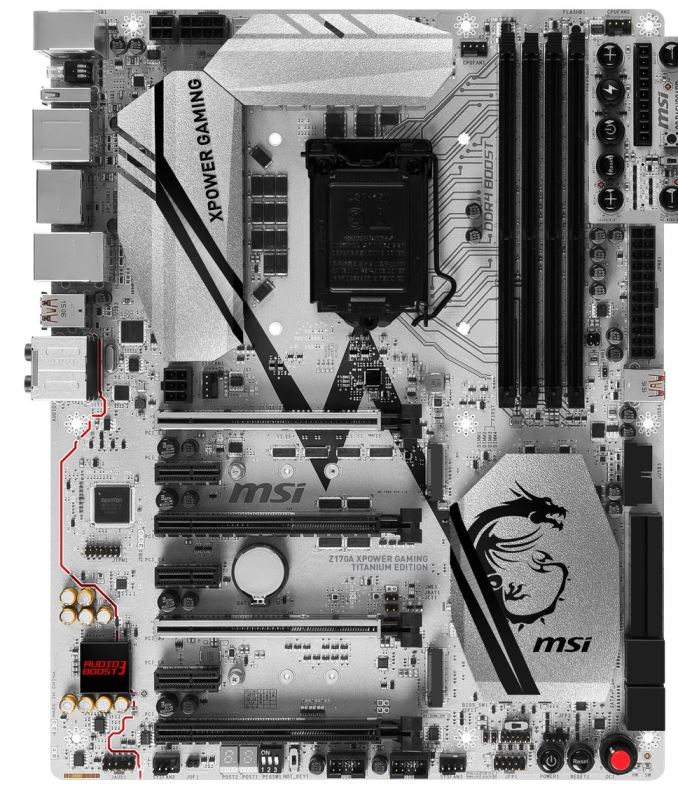

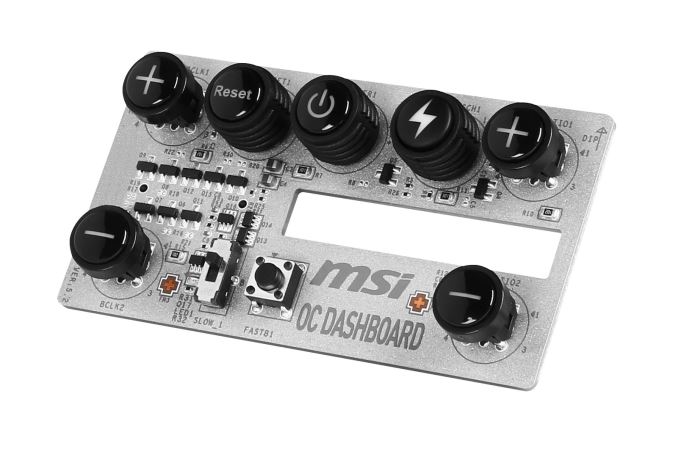






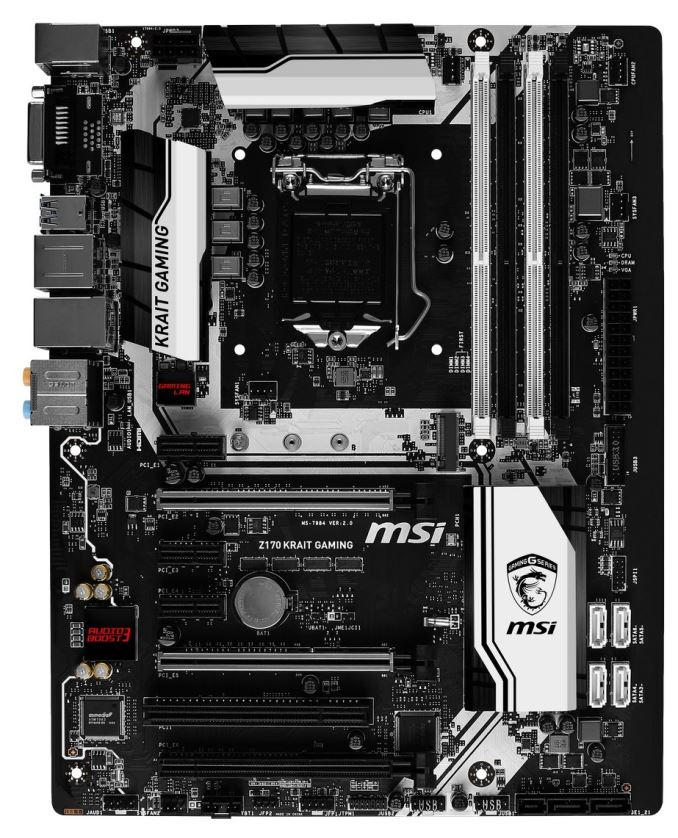







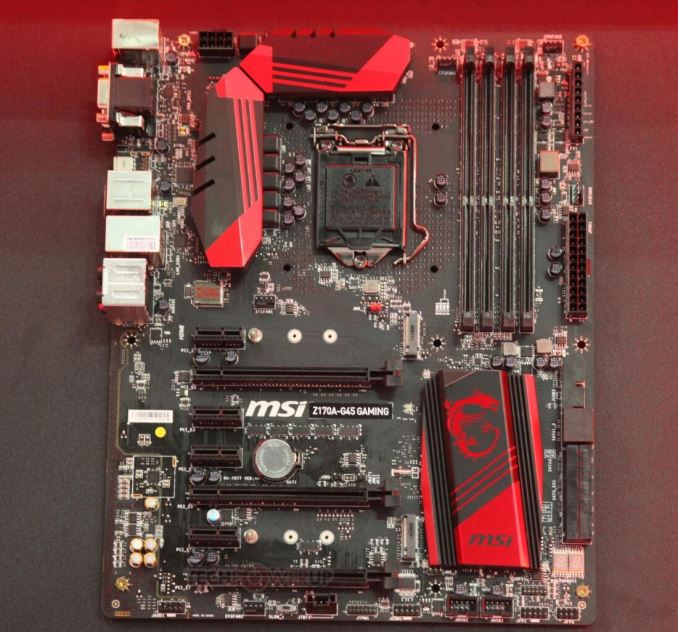
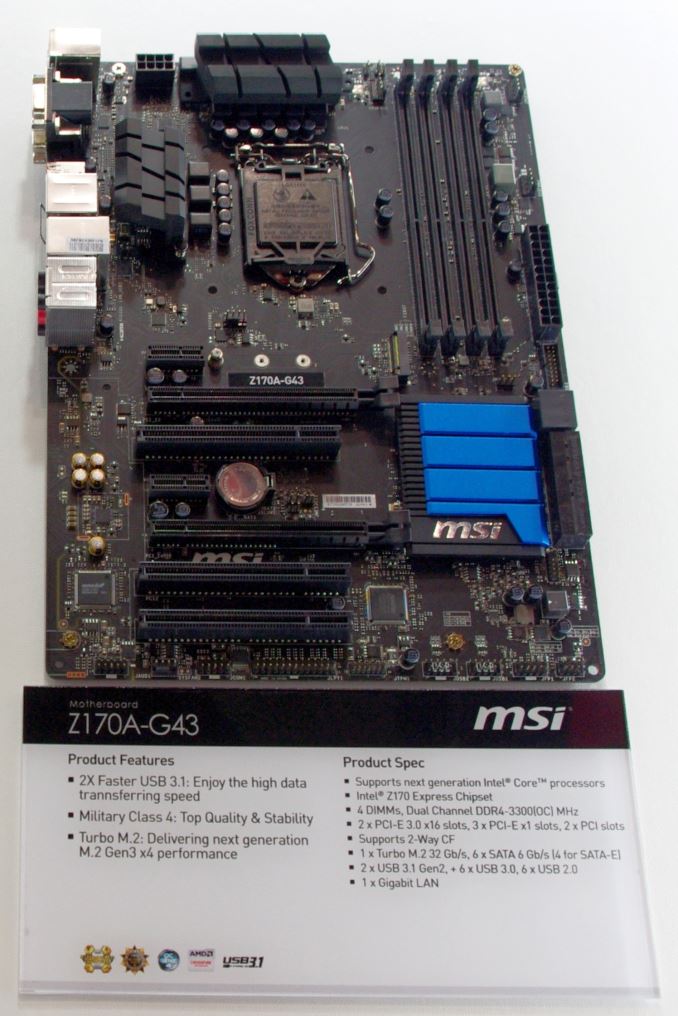
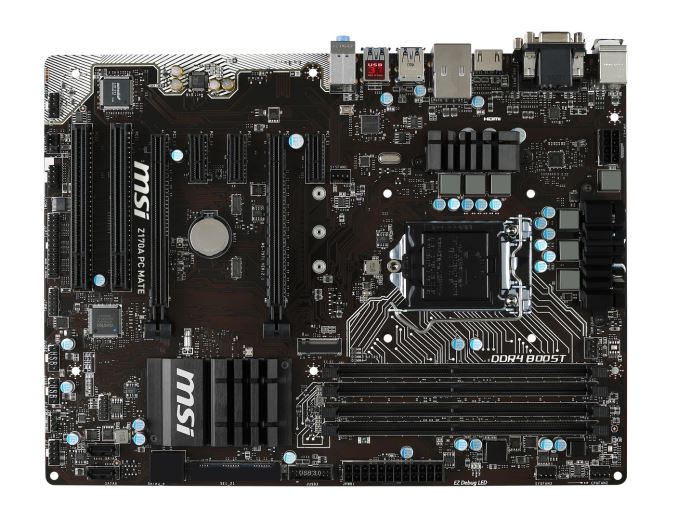














85 Comments
View All Comments
8steve8 - Wednesday, August 5, 2015 - link
how about the 6700k CPUs in the USA?Luminair - Wednesday, August 5, 2015 - link
FYI Asus has an alert on BBB for sending people broken products: http://www.bbb.org/greater-san-francisco/business-...Hundreds of complaints this year, including people with broken motherboard who did an RMA and received in return... a broken motherboard.
DanNeely - Wednesday, August 5, 2015 - link
Ugh. Are they only testing RMAs after getting them sent back twice? (Assuming the first time is user error, not a hardware fault?)apoclypse - Wednesday, August 5, 2015 - link
Wow. Remember when motherboards and computer components were ugly? Thos Asrock boards are a work of art. The same with the MSI boards. Not to impressed with what Asus has this time around (in-terms of looks). I've recently built a Haswell-E rig with the X99X from Asrock so I'm not really looking to buy anything but damn those boards make me regret not waiting. Ah well, I needed the extra cores anyway.NARC4457 - Wednesday, August 5, 2015 - link
Am I the only one that is still ridiculously confused at the next generation of fast storage? m.2/nvMe what's bootable, what's not, what pinout (B/M)....What the hell is going on with these standards (sic)?
Ian Cutress - Wednesday, August 5, 2015 - link
M.2 is a connection standard that can support both SATA and PCIe storage protocols. It is up to the manufacturer to decide which protocol to implement.SATA drives can use AHCI or IDE, while PCIe drives can be either AHCI or NVMe, but it depends on the controller if NVMe is supported.
Typically NVMe has to be enabled in the BIOS in order to boot from the drive, and you have to install the operating system in UEFI mode - basically Win8.1/10 does this already.
Most Z170 motherboards with M.2 PCIe 3.0 x4 should be supporting NVMe devices as boot drives , although I would still refer to the motherboard manufacturers website to confirm this is the case, either on the motherboard's page or in the motherboard's downloadable manual.
Hope that helps.
NARC4457 - Monday, August 10, 2015 - link
Thanks Ian, that actually helps a lot.joex4444 - Wednesday, August 5, 2015 - link
As an owner of a PCIe 2.0 x8 RAID card, I'd love to see someone put out a PCIe 3.0 x8 slot controlled by the PCH that's actually x8. I see a lot of slots that are physically x16, with x8 connectors but the text always refers to them as PCIe 3.0 x4 (PCH). As I've 8 drives connected to that, I want the full x8 connection. Now of course using the second physical x16 slot on SLI boards and taking 8 lanes from the CPU ought to work, but that drops the GPU down to an x8 link; it would be great to use x16/x8 instead of x16/x4 or x8/x8 here (GPU/RAID).Z170 looked so promising, but so far only X99 offers the PCIe configuration described above.
Ian Cutress - Wednesday, August 5, 2015 - link
The chipset essentially has five PCIe 3.0 x4 controllers, and you can't combine them into an x8. You could use a PCIe bridge chip like a PLX to convert 4 to 8, but you'll still be limited by the four lanes in into the chip. The only way you will get an 8-lane slot is from the processor, unfortunately (because then it would open up GPU possibilities).DanNeely - Wednesday, August 5, 2015 - link
Is there any reason other than market segmenting (protecting LGA2011's 40 CPU lanes) or avoiding a single device being able to max out the DMI link for them not to allow combos bigger than a 4x?